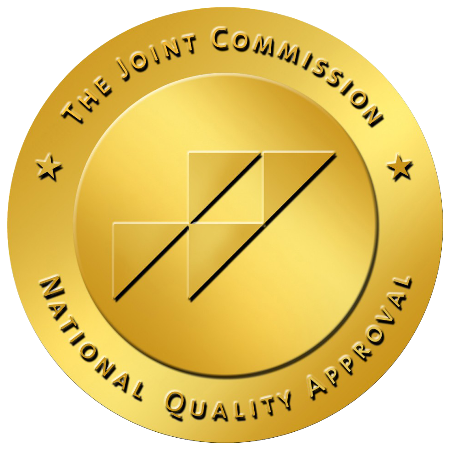What Is the Relapse Prevention Model?

The relapse prevention model aims to prepare you for life’s challenges and empower you with ways to overcome them and maintain your recovery.
Dr. Allan G. Marlatt developed the relapse prevention model with the help of his junior colleague, Dr. Katie Witkiewitz, now one of the foremost experts in the world on addiction treatment, harm reduction, and mindfulness-based interventions.
Marlatt’s model of relapse prevention, or the Marlatt model, combines cognitive-behavioral therapy and a set of strategies designed to prevent relapse likelihood and severity.
When the National Institutes of Health (NIH) conducted randomized trials comparing post-treatment support methods over a year, people who followed the relapse prevention model had the lowest relapse rates.
What Is the Relapse Prevention Model?
The relapse prevention model is a strategy to reduce the likelihood of relapse after a person completes the initial stages of treatment.
Relapse prevention (RP) is a mindfulness-based cognitive therapy that helps identify high-risk situations that could trigger a relapse and ways for a person to overcome them and maintain the positive outcomes and changes they’ve made.
Some of the key points of the relapse prevention model include:
- Empowerment to advocate for themselves
- Healthy coping skills in triggering situations
- Positive reinforcement
- Finding and maintaining a support network to rely on
Relapse prevention has two specific goals:
- Preventing a lapse or relapse before it happens through learned skills and techniques
- Providing lapse management strategy to prevent it from progressing into a full-blown relapse
Lapse vs. Relapse
The relapse prevention model is designed to stop relapse at any stage and addresses how to deal with a lapse. The difference between a lapse and a relapse is a person continuing to use after the first setback. The relapse prevention model considers lapses to be temporary setbacks and opportunities to learn and modify your relapse prevention plan.
What Are the Three Stages of Relapse?
There are three distinct stages to a relapse— emotional, mental, and physical.
What Is Cognitive-Behavioral Therapy?
Cognitive-behavioral therapy (CBT) is the most widely used evidence-based talk therapy worldwide. CBT aims to recognize negative thoughts and the harmful behaviors they lead to, reshape how you interpret things, put them in context, and develop healthy and positive ways to express those thoughts through words and actions.
Cognitive-behavioral therapy helps successfully treat various mental health issues, traumatic experiences, alcohol dependence, addictive behaviors, and substance abuse.
The cognitive-behavioral approach to relapse prevention therapy teaches self-reliance and self-confidence. While a support system and help from other people can help stop a relapse at any stage, there will be times when other people aren’t available. Trusting your instincts and making informed choices to maintain your recovery and prevent relapse are invaluable skills CBT teaches you.

Relapse Prevention Strategies
Working with their therapist, a person will explore their past behaviors to anticipate future challenges in everyday life and develop various methods to navigate them without resorting back to substance use.
Establishing a relapse prevention plan can involve role-playing, mindful meditation, relapse prevention worksheets, and verbal or written agreements with a support system.
Relapse prevention strategies include:
Avoiding High-Risk Situations and Triggers
Working with a therapist and using relapse prevention worksheets during RP therapy, patients examine their past experiences and use patterns, both positive and negative experiences. High-risk situations are times when you encounter places, people, situations, or traditions that trigger emotional states and substance associations.
Examples of high-risk situations and triggers include:
- People you used with
- Places you used
- Holidays and anniversaries
- Memories or associations, both positive and negative, are intertwined with using
- Times of day or night you’d start using
- Social pressure
The cycle of addiction makes it difficult to recognize how some of these things contribute. Removing yourself from triggers at the beginning of treatment increases the chances of success; being adequately prepared to deal with high-risk situations when you return home is crucial to maintaining recovery.
Coping Skills
Planning an exit strategy for high-risk situations and practicing and role-playing those prepare you for the real thing and how to manage your thoughts, emotions, and actions when you come across them.
Coping skills can include:
- Firmly saying no when offered drinks or drugs
- Leaving situations
- Positive self-talk
- Ending high-risk relationships
Coping skills can be used before, during, and after a situation. Working with a therapist, you can prepare as many different coping skills as you feel you will need.
Eliminating Myths and Placebo Effects
People struggling with addiction develop unrealistic beliefs about the power of drugs and alcohol that a therapist will help them reexamine and deconstruct. For instance, some alcoholics believe that alcohol makes them more social or relaxed, people who use uppers believe they improve their academic performance, etc.
Cognitive-behavioral therapy will help restructure how you perceive yourself and realize the delayed and long-term effects of substances that outweigh the imagined positive impact. CBT also helps you mentally list the positive outcomes and rewards of abstaining from using when you experience cravings.

Managing Self-Efficacy
Improving self-reliance and confidence is an integral part of relapse prevention. There won’t always be a therapist or sponsor available to reinforce good decisions; having sound judgment and trusting yourself to choose recovery is vital.
The cognitive-behavioral model of relapse prevention helps teach that establishing new habits and boundaries involves learning and practicing skills instead of just a test of willpower. Building self-efficacy includes a series of small choices and achieving small goals that lead to more significant victories.
Managing Urges and Cravings
Frequently people use the terms urges and cravings interchangeably, but addiction experts differentiate them. “An urge is a sudden impulse to drink or use, whereas a craving is an ongoing desire to experience the effects and consequences of use.” -Dr. Marlatt
Effective ways to manage urges and cravings include:
- Making a list of the negative consequences of using
- Calling a friend or sponsor
- Distract yourself
- Exercise
- Positive self-talk
- Attend a meeting
Urges and cravings are triggered mainly by high-risk situations; however, downtime or being alone can also be a significant stressor, so it is essential to be able to acknowledge and overcome them.
Emergency and Lapse Management Planning
Life is full of unexpected things, and planning for those events is part of a relapse prevention plan. An emergency can range from a trigger you didn’t expect and cannot escape to someone serving you alcohol by accident. Some people consider a lapse as accidentally taking a drink of alcohol and nothing more; some view it as giving in to an urge and intentionally using a substance.
Managing an emergency or lapse can include:
- Calling or meeting with a sponsor
- Attending a meeting
- Contacting your therapist
- Abstaining from using more
- Assessing what caused you to lapse and how to avoid it in the future
A slip-up doesn’t mean failure. Your strength and success determine how you re-commit to recovery and learn from your challenges. Relapse prevention plans help enforce that.

Overview of the RP Model
The relapse prevention model is critical to successfully maintaining long-term recovery and overcoming triggers and challenges.
The goals of the RP model include:
- Identify high-risk situations and people for each person
- Teach and enhance healthy coping skills for those situations
- Eliminate the myths around a substance’s power
- Increase confidence and self-efficacy
- Set positive outcome expectations
- Manage urges and cravings
- Establish an emergency and relapse plan
A solid relapse prevention plan helps people make informed decisions to protect their recovery and stop a potential relapse at any stage.
Relapse Prevention Therapy at Northridge Addiction Treatment Center
If you or a loved one is struggling with substance abuse, help is available. Northridge Addiction Treatment Center offers personalized, evidence-based treatment plans in a comfortable, supportive residential facility.
You can’t beat addiction alone. Our compassionate and licensed professionals at NATC collaborate with you after medically supervised detox to create a comprehensive and individualized rehabilitation plan.
Let us help you find your path to recovery and teach you the skills to maintain a life-long, fulfilling recovery. Reach out now.
Find Meaningful Recovery
Our caring and compassionate specialists are eager to help you comfortably navigate this journey to recovery. Our individualized treatment plan, programs, and therapies may be a perfect match for you or your loved one. Let us assist you in living the happy life you deserve. It starts with a phone call.




